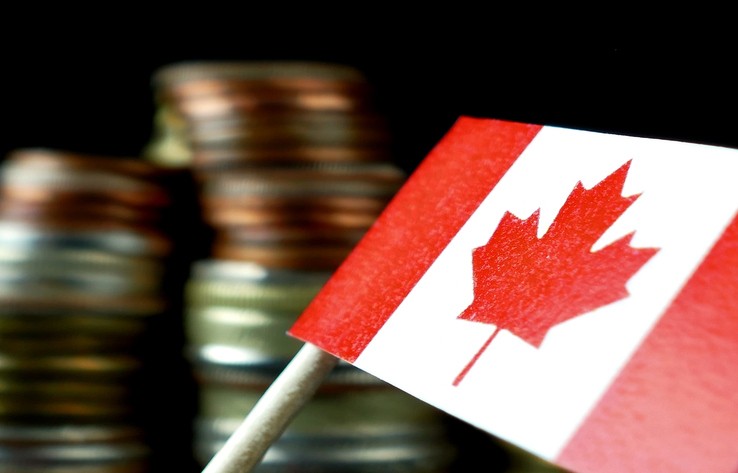With the global economy on track to post the strongest growth since 2014, Canada is poised to be the G7’s growth leader in 2017, according to the latest RBC Economic Outlook. Buoyed by consumer spending and housing activity delivering strong gains early in the year, RBC Economics expects real gross domestic product (GDP) to grow an impressive 2.9 per cent in 2017. The forecast calls for slower but still above-potential growth of 1.9 per cent in 2018, with growth moderating to 1.6 per cent in 2019, in line with potential.
“This was a highly unusual year for the global economy with heightened political uncertainty accompanied by strong financial market performance and accelerating economic growth,” said Craig Wright, Senior Vice-President and Chief Economist at RBC. “Canada’s robust growth in 2017 is likely to moderate somewhat in 2018 as key economic drivers shift, but we still anticipate the economy will continue to outperform its potential.”
While the Canadian consumer and an active housing market powered growth in 2017, the dominant forces driving the economy are likely to change in 2018. Government spending on infrastructure and a moderate increase in business investment, which began to recover in 2017, are forecast to support economic growth next year. Canadian exports are expected to strengthen mildly in 2018, although the outcome of the NAFTA negotiations has the potential to stymie both exports and investment next year.
The housing market finally entered the early stages of a cooling phase in mid-2017 after the impact of changes to regulations and rising interest rates took root. Housing resales and ancillary purchases are forecast to slip in 2018. Meanwhile the Canadian economy added jobs at a blockbuster pace generating 344,000 jobs in the first 11 months of the year, rivaling the gain recorded over the same period in 2007, before the Great Recession.
The Bank of Canada raised interest rates for the first time in nearly seven years with two increases made over the summer and subsequently assumed a cautious tone regarding further hikes. In the near term, we expect the overnight rate to remain at 1.0 per cent. However, with the economy forecast to stay on its current path, we expect additional rate increases to ensue in the second quarter of 2018 and forecast the overnight rate will end the year at 1.75 per cent.
The Canadian dollar up against competing pressures
Canada’s dollar finds itself trapped between expectations of continued policy normalization from the Bank of Canada and concerns about NAFTA and competitiveness stemming from US tax reforms. While we expect Canada’s dollar will weaken modestly early in the year, anticipated rate hikes will likely cause the dollar to modestly rebound. On balance, RBC forecasts that Canada’s currency will trade between 75 US cents and 80 US cents in 2018.
All provincial economies expected to grow in 2018
For the first time since 2011, RBC forecasts all provincial economies to grow in 2018, albeit at a slower pace relative to 2017 for most provinces. In many cases, including British Columbia, Ontario, Manitoba and Quebec, economic slack has diminished considerably following long periods of expansion, making it harder to repeat 2017’s rapid growth rates.
Bucking this trend, Saskatchewan and Newfoundland and Labrador are the two provinces forecasted to grow faster in 2018 that the previous year. Saskatchewan’s economy should benefit from a rebound in its agricultural sector, while in Newfoundland and Labrador we expect a rise in oil production will more than offset a drop in capital spending and weakness in other sectors of the economy.
Outside of Canada
Global
The pickup in the global economy reflects activity in a number of countries accelerating backed by favourable conditions and improving labour markets. The euro-area is experiencing strong momentum, although the Brexit negotiations are likely to see the pace slow somewhat. The UK economy is likely to bear the brunt of Brexit related uncertainty, but the odds of a severe downturn are low in our opinion. RBC forecasts global growth of 3.6 per cent in 2017 and 3.7 per cent in 2018.
U.S. economy on warp speed
The U.S. economy took off in the middle of the year, and is expected to ease only slightly in the fourth quarter. A return of business investment and solid consumer spending contributed to the rapid growth and are expected to continue in the coming year. RBC projects the U.S. economy to grow 2.3 per cent in 2017 and 2.5 per cent in 2018.
We expect the U.S. Federal Reserve to continue to gradually raise rates in 2018 after a final hike in December 2017 even when Jerome Powell takes over as Chair in February. We forecast that the Fed will raise the Funds target each quarter in 2018 to end the year at 2.5 per cent.
A complete copy of the RBC Economic and Financial Market Outlook is now available. A separate RBC Economics Provincial Outlook assesses the provinces according to economic and employment growth, unemployment rates, retail sales, housing starts and consumer price indices.

